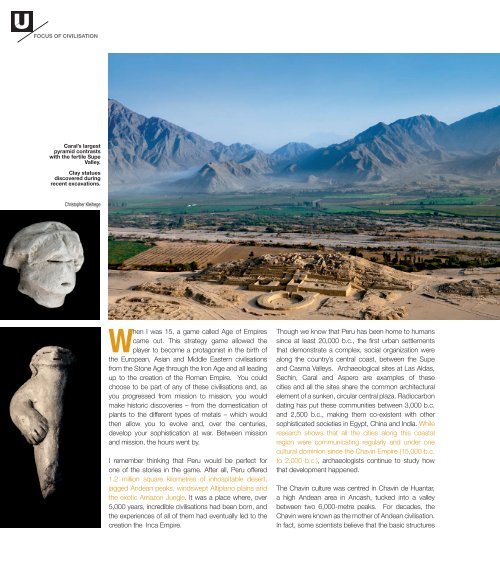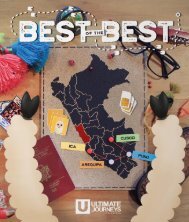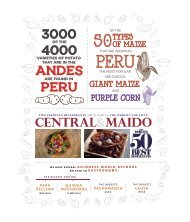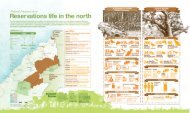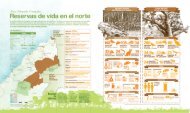UJ#5 Paracas
Create successful ePaper yourself
Turn your PDF publications into a flip-book with our unique Google optimized e-Paper software.
FOCUS OF CIVILISATION<br />
Caral’s largest<br />
pyramid contrasts<br />
with the fertile Supe<br />
Valley.<br />
Clay statues<br />
discovered during<br />
recent excavations.<br />
Christopher Kleihege<br />
When I was 15, a game called Age of Empires<br />
came out. This strategy game allowed the<br />
player to become a protagonist in the birth of<br />
the European, Asian and Middle Eastern civilisations<br />
from the Stone Age through the Iron Age and all leading<br />
up to the creation of the Roman Empire. You could<br />
choose to be part of any of these civilisations and, as<br />
you progressed from mission to mission, you would<br />
make historic discoveries – from the domestication of<br />
plants to the different types of metals – which would<br />
then allow you to evolve and, over the centuries,<br />
develop your sophistication at war. Between mission<br />
and mission, the hours went by.<br />
I remember thinking that Peru would be perfect for<br />
one of the stories in the game. After all, Peru offered<br />
1.2 million square kilometres of inhospitable desert,<br />
jagged Andean peaks, windswept Altiplano plains and<br />
the exotic Amazon Jungle. It was a place where, over<br />
5,000 years, incredible civilisations had been born, and<br />
the experiences of all of them had eventually led to the<br />
creation the Inca Empire.<br />
Though we know that Peru has been home to humans<br />
since at least 20,000 b.c., the first urban settlements<br />
that demonstrate a complex, social organization were<br />
along the country’s central coast, between the Supe<br />
and Casma Valleys. Archaeological sites at Las Aldas,<br />
Sechin, Caral and Aspero are examples of these<br />
cities and all the sites share the common architectural<br />
element of a sunken, circular central plaza. Radiocarbon<br />
dating has put these communities between 3,000 b.c.<br />
and 2,500 b.c., making them co-existent with other<br />
sophisticated societies in Egypt, China and India. While<br />
research shows that all the cities along this coastal<br />
region were communicating regularly and under one<br />
cultural dominion since the Chavin Empire (15,000 b.c.<br />
to 2,000 b.c.), archaeologists continue to study how<br />
that development happened.<br />
The Chavin culture was centred in Chavin de Huantar,<br />
a high Andean area in Ancash, tucked into a valley<br />
between two 6,000-metre peaks. For decades, the<br />
Chavin were known as the mother of Andean civilisation.<br />
In fact, some scientists believe that the basic structures


